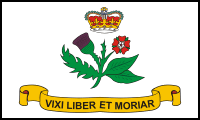 SKC Films Library |
| SKC Films Library >> American History >> United States: Local History and Description >> Middle Atlantic States >> Maryland |
| Annapolis a city of approximately 38,400 people located at the mouth of the Severn River, on the western shores of Chesapeake Bay; capital of Maryland; seat of Anne Arundel County; home to the United States Naval Academy
History Puritans from Virginia founded the settlement of Providence on the north shore of the Severn River in 1649, and that settlement was subsequently named "Anne Arundel's Towne," after the wife of Lord Baltimore, who owned the proprietary colony. In 1694, Sir Francis Nicholson, Governor of the Maryland Colony, moved the colony's capital from St. Mary's City to Anne Arundel's Towne, which he renamed Annapolis in honor of Princess Anne, heir to the British throne. In 1708, Queen Anne chartered her colonial namesake as a city, and her royal badge, with a crown over the entwined thistle of Scotland and Tudor rose of England, is still depicted on the Annapolis flag. Sir Francis was also responsible for the layout of the city. Instead of using a customary grid, he constructed a baroque plan similar to the capitals of Europe. He drew circles with radiating streets to create focal points and give importance to certain structures. In one circle is St Anne's, the Episcopal Church, regarded as the spiritual center of the city. In the other circle, rising over the harbor, is the State House, the seat of government. From the middle of the 18th century until the Revolutionary War, Annapolis was noted for its wealthy and cultivated society, thanks primarily to its status as a major center for shipping commerce. Its economic status declined rapidly in the late-1700's, however, after Baltimore, with its deeper harbor, was made a port of entry in 1780, and other water-based industries such as oyster-packing, boatbuilding and sailmaking became the city's chief industries. Annapolis served as the capital of the United States from November 26, 1783 to June 3, 1784, and it was in the State House that George Washington resigned his commission as commander in chief of the Continental Army on December 23, 1783. In 1786, a convention, to which delegates from all the states of the Union were invited, was called to meet in Annapolis to consider measures for the better regulation of commerce. Delegates came from only five states, however, and the "Annapolis Convention" only succeeded in passing a resolution calling for another convention to meet at Philadelphia in the following year to amend the Articles of Confederation; that convention resulted in the Constitution of the United States that governs the country to this day. The United States Naval Academy was established in Annapolis in 1845. Government Annapolis is governed via the mayor council system. The city council consists of eight members who are elected from single member wards. The mayor is elected directly in a citywide vote. Economy The State of Maryland is the largest employer in Annapolis, followed by the Anne Arundel Medical Center and the Naval Academy. Education Annapolis is served by the Anne Arundel County Public Schools system. St. John's College, founded in 1696 as King William's School, is the third oldest college in the United States (after Harvard and William and Mary). Sites and Attractions The Maryland State House, built in 1772, is the oldest state capitol still in daily use. The Continental Congress met in the building from November 26, 1783 to August 13, 1784, and the Treaty of Paris, which formally ended the Revolutionary War, was ratified there on January 14, 1784. The Annapolis Maritime Museum explores the maritime heritage of Annapolis and the Chesapeake Bay with exhibits and live entertainment. Visitors can learn about the life of watermen and the seafood industry of yesteryear in the Bay Experience Center, which is housed in an oyster packing plant. The museum also offers tours of the Thomas Point Shoal Lighthouse, the last remaining screw-pile lighthouse in its original location on the Chesapeake Bay. The Banneker-Douglass Museum displays artifacts and photographs documenting the history of black life in Maryland. Located in what was once an African Methodist Episcopal church, the museum is named for Benjamin Banneker and Frederick Douglass, both of whom overcame prejudice to achieve greatness in their fields. The Chesapeake Children's Museum features a ten-foot aquarium with native sea life, a "touchable" turtle tub, an earthen habitat for box turtles, and many other native and exotic animal species. The Kunta Kinte-Alex Haley Memorial, located at the City Dock in Annapolis, commemorates the place that Alex Haley's African ancestor, Kunta Kinte, arrived in the New World. The Memorial is a sculpture depicting Alex Haley, author of the book Roots, reading to three children of different ethnic backgrounds. The Maryland Hall for the Creative Arts is a center for studying, exhibiting, performing, and practicing the arts. Resident companies include the ballet, symphony, opera, and chorale who all give performances in its 800 seat auditorium. It is also home to resident artists who teach and maintain studios there and frequently exhibit in the galleries on the premises. Thousands of students of all ages take classes in the visual and performing arts. The National Sailing Hall of Fame explores the history of sailing and its impact on our culture, honoring those who have made outstanding contributions to the sport of sailing. Exhibits display artifacts, works of art, literature, film photographs, and memorabilia related to sailing. Annapolis is home to more 18th-century buildings than anywhere else in the United States, including the homes of all four Maryland signers of the Declaration of Independence. SEE ALSO |
| SKC Films Library >> American
History >> United States:
Local History and Description
>> Middle
Atlantic States >> New York This page was last updated on September 29, 2017. |
